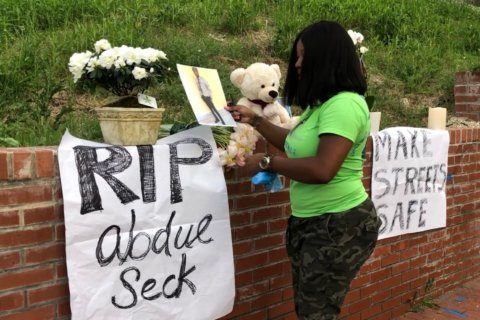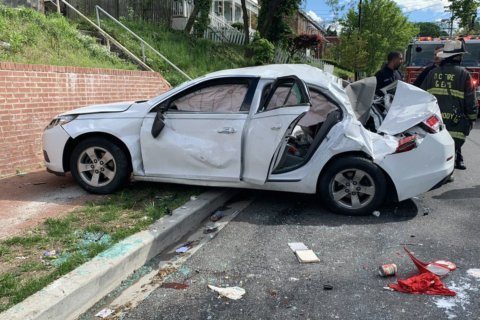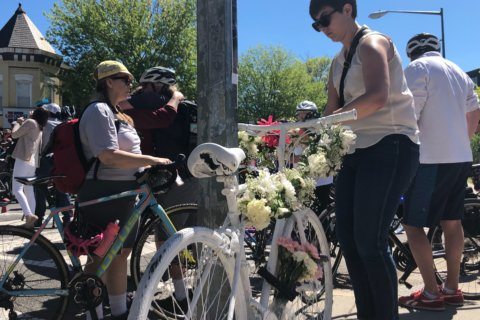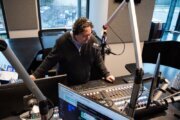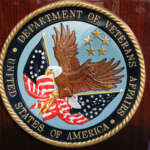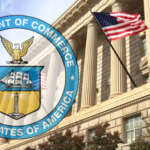After two men worked together to paint a crosswalk on a Southeast D.C. street, a District Department of Transportation spokesperson issued a statement saying the agency “will be investigating the location to see if additional markings, signage and speed humps are needed in the area.”
The crosswalk was painted in the 2300 block of 16th Street Southeast, just blocks from where 31-year-old Abdul Seck, who was visiting from New York, was struck and killed on Easter Sunday.
Ronald Thompson Jr., of Anacostia, said the crosswalk was painted by Michael Kaercher, a Northeast D.C. resident. Thompson said he and Kaercher met at the vigil for Seck last week, where they shared their concerns about road safety in D.C.
It’s illegal for people to install crosswalks on their own, but Kaercher said he felt compelled to act.
“It was such an obvious project that I could do safely, without posing any significant risk to myself and no risk at all to other parties,” said Kaercher, who points out he bought a high-visibility vest to wear as he painted.
Kaercher said the actual painting took no more than two hours. “The most painting I’ve ever done before was my dining room wall,” Kaercher said.
The Washington Area Bicyclist Association has been active in pushing for infrastructure to create safer streets. When asked about residents who take matters into their own hands, such as painting a crosswalk, WABA communications director Colin Browne said, “WABA’s position on things like this is that DDOT should have built the crosswalk already, like, years ago.”
Thompson was asked if he worried about being cited for the crosswalk. He said he hoped not, adding, “Given the fact that it was DDOT that put those curb cuts there, who placed the signage to let folks know there was a blind pedestrian in the neighborhood and then didn’t paint the crosswalks.”
Along with an orange sign that reads “Blind Pedestrian,” the same block of 16th Street features a flashing light that lets motorists know to slow down — but that light is hidden behind a utility pole that makes it impossible for drivers to see the warning.
According to the statement from a DDOT spokesman, Thompson requested the crosswalk in late 2018. Thompson said he did make a formal request in October 2018.
DDOT allots up to 270 days for crosswalks to be completed “due to marking installation being very weather dependent.” DDOT carries out the installation of most safety features between March and November, according to the statement, and the department got 417 service requests for pavement markings in 2019 so far and closed 141 of those.
“My hope is that folks all across the city recognize the importance of pedestrian safety,” Thompson said.
He added that changing the design of streets can contribute to safety by getting drivers to slow down. In Anacostia, he said many of the roads have a design that encourages speeding and that many safety features on streets in other parts of the city are missing on streets in Southeast.
Of drivers, Thompson said, “They have to slow down. They have to give folks the right of way; 3,000 pounds of metal does irreparable harm to people.”



